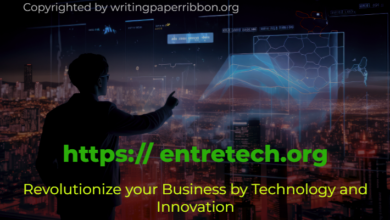Elevate with Vergando: Discover the Uses, Impact and Future
Introduction
In the realm of materials science, innovation knows no bounds. From traditional metals to cutting-edge composites, the quest for new materials with superior properties drives technological advancement. One such material that has garnered attention in recent years is Vergando. Its emergence marks a significant milestone in the pursuit of materials that offer a blend of strength, flexibility, and resilience unparalleled by conventional options. In this comprehensive guide, we delve deep into the origins, uses, and impact of Vergando, shedding light on its fascinating properties and potential applications.
Table of Contents
Understanding Vergando
Vergando, a synthetic polymer crafted through advanced polymerization techniques, embodies a unique amalgamation of characteristics not commonly found in traditional plastics or elastomers. Derived from the Spanish word “verganza,” which loosely translates to resilience or strength, Vergando lives up to its name by exhibiting exceptional tensile strength, remarkable flexibility, and notable chemical resistance. Its creation represents a triumph of materials science, a testament to the ingenuity of researchers striving to push the boundaries of what is possible in the realm of polymers.
Origins of Vergando

The journey towards the development of Vergando can be traced back to the early endeavors of materials scientists seeking to address the limitations inherent in conventional polymers. Through meticulous experimentation and innovative approaches to molecular design, researchers succeeded in crafting a material that transcends the constraints of its predecessors. By introducing novel additives and fine-tuning the polymerization process, they unlocked a realm of possibilities, giving rise to a material that redefines the standards of strength, flexibility, and chemical resistance.
Properties of Vergando
Central to Vergando’s appeal are its exceptional properties, each contributing to its versatility and suitability for a myriad of applications. Its high tensile strength surpasses that of many conventional plastics, offering durability and reliability in demanding environments. Despite its formidable strength, Vergando remains remarkably flexible, capable of enduring bending and stretching without compromising its structural integrity. Moreover, its resistance to various chemicals, acids, and solvents enhances its utility in environments where other materials may falter. With a broad operating temperature range, Vergando exhibits stability across extreme conditions, ensuring consistent performance in diverse settings.
Manufacturing Process
The production of Vergando entails a meticulous process that involves precise control over its molecular structure and composition. From the initial stages of polymerization to the final steps of compounding, extrusion, and molding, each phase demands attention to detail and adherence to stringent quality standards. Through careful manipulation of processing parameters and formulation adjustments, manufacturers achieve the desired balance of properties, paving the way for the widespread adoption of Vergando across industries.
Comparison with Traditional Materials
In comparison to traditional materials such as metals and conventional polymers, Vergando offers a host of advantages that position it as a preferred choice for various applications. Unlike metals, Vergando provides comparable strength with reduced weight, making it an attractive option for lightweight structures where mobility and efficiency are paramount. Furthermore, its moldability and cost-effectiveness present opportunities for innovation and cost savings, driving its adoption across sectors seeking to optimize performance without compromising on budgetary constraints.
Applications of Vergando
Within the automotive industry, Vergando finds an array of applications owing to its exceptional properties and performance characteristics. From interior components like dashboard panels and seat covers to exterior elements such as bumper fascias and trim, Vergando contributes to both the aesthetic appeal and functional integrity of vehicles. Its durability and resistance to wear make it particularly well-suited for applications subjected to rigorous use and exposure to environmental elements.
Aerospace and Aviation
In the aerospace and aviation sectors, where safety and reliability are paramount, Vergando emerges as a material of choice for various applications. Its lightweight yet robust nature makes it an ideal candidate for aircraft interiors, structural components, and protective coatings. Additionally, its resistance to aviation fuels and lubricants enhances its suitability for critical applications where performance under challenging conditions is essential.
Consumer Electronics
Within the realm of consumer electronics, Vergando plays a pivotal role in enhancing the durability and functionality of devices ranging from smartphones and tablets to laptops and wearable gadgets. Its ability to withstand impacts and protect delicate electronic components makes it an invaluable material for casings, enclosures, and protective covers. Furthermore, its flexibility and resistance to environmental factors ensure longevity and reliability in demanding usage scenarios.
Medical Devices

In the field of healthcare, Vergando’s biocompatibility and chemical resistance position it as a material of choice for a wide range of medical devices and equipment. From surgical instruments and implants to drug delivery systems and diagnostic tools, Vergando offers reliability, safety, and performance in critical healthcare applications. Its ability to maintain structural integrity in sterilization processes further enhances its suitability for use in medical settings where hygiene and safety are paramount.
Building and Construction
Within the building and construction industry, Vergando’s strength, durability, and weather resistance make it an indispensable material for a multitude of applications. From roofing membranes and structural reinforcements to window frames and insulation materials, Vergando contributes to the longevity and performance of buildings and infrastructure projects. Its ability to withstand harsh environmental conditions and resist degradation ensures long-term reliability and cost-effectiveness in construction applications.
Industrial Equipment
In industrial settings where reliability and performance are critical, Vergando finds widespread use in machinery components, conveyor belts, and seals. Its resistance to abrasion, chemicals, and extreme temperatures ensures optimal performance in demanding environments where traditional materials may falter. Additionally, its ability to maintain dimensional stability and withstand mechanical stress enhances the efficiency and longevity of industrial equipment and systems.
Textiles and Apparel
Within the textile and apparel industry, Vergando’s unique combination of properties opens up new possibilities for high-performance fabrics and garments. From outdoor gear and protective clothing to fashion accessories and footwear, Vergando offers comfort, durability, and style. Its ability to withstand wear and tear while maintaining flexibility and breathability makes it an attractive option for applications where performance and aesthetics converge.
Packaging
In the packaging industry, Vergando’s strength, flexibility, and barrier properties make it an ideal choice for a wide range of packaging applications. From food and beverage packaging to industrial containers and pharmaceutical packaging, Vergando provides protection, preservation, and branding opportunities for various products. Its ability to withstand impacts and environmental factors ensures product integrity and enhances shelf appeal, making it a preferred material for packaging solutions across industries.
Environmental Considerations

While Vergando offers impressive performance advantages, its environmental impact must be carefully considered in the context of sustainability. Like many synthetic polymers, the production and disposal of Vergando raise concerns about resource consumption and waste management. However, ongoing research and development efforts focus on mitigating these challenges by exploring sustainable alternatives and recycling methods. By optimizing production processes and promoting responsible consumption practices, stakeholders can minimize the environmental footprint of Vergando and pave the way for a more sustainable future.
Biodegradability
One avenue of research in Vergando focuses on the development of biodegradable variants that break down more readily in natural environments. By incorporating bio-based additives and optimizing molecular structures, scientists aim to create Vergando materials that offer the same performancebenefits while minimizing environmental harm. These biodegradable formulations hold promise for applications where end-of-life disposal presents challenges, offering a more sustainable alternative to conventional plastics. By leveraging the innate biodegradability of organic compounds, researchers strive to strike a balance between performance and environmental responsibility, ushering in a new era of eco-friendly materials.
Life Cycle Assessment
A holistic approach to evaluating the environmental impact of Vergando involves conducting life cycle assessments (LCAs) to quantify its environmental footprint from cradle to grave. These assessments consider factors such as raw material extraction, manufacturing processes, product use, and end-of-life disposal to provide insights into the overall sustainability of Vergando. By identifying hotspots and potential areas for improvement, LCAs inform decision-making processes and drive continuous improvement initiatives aimed at reducing environmental impacts throughout the product lifecycle.
Recycling and Circular Economy
Promoting recycling and embracing circular economy principles are integral to minimizing the environmental footprint of Vergando. By designing products for recyclability and implementing efficient recycling systems, stakeholders can close the loop and ensure that Vergando materials are reintegrated into the production cycle, reducing the demand for virgin resources and minimizing waste. Additionally, exploring opportunities for closed-loop recycling and upcycling further enhances resource efficiency and contributes to the transition towards a circular economy model.
Regulatory Compliance
As Vergando gains traction across various industries, ensuring compliance with regulatory requirements becomes paramount. Regulatory frameworks governing materials safety, environmental protection, and product labeling dictate the standards that Vergando-based products must meet to ensure consumer safety and environmental responsibility. By adhering to these regulations and proactively engaging with regulatory authorities, manufacturers and stakeholders can foster trust and confidence in Vergando materials while demonstrating their commitment to compliance and accountability.
Future Prospects and Challenges
The future of Vergando holds promise for continued innovation and advancement as researchers explore new formulations, processing techniques, and applications. Emerging trends in materials science, such as nanotechnology and additive manufacturing, offer opportunities to enhance the properties and performance of 𝚟𝚎𝚛𝚐𝚊𝚗𝚍𝚘, opening up new avenues for exploration and discovery. By harnessing the power of innovation and collaboration, stakeholders can unlock the full potential of 𝚟𝚎𝚛𝚐𝚊𝚗𝚍𝚘 and address evolving market needs and challenges.
Scalability and Commercialization

As 𝚟𝚎𝚛𝚐𝚊𝚗𝚍𝚘 matures from a niche material to a mainstream solution, scalability and commercialization become critical factors in its widespread adoption. Challenges related to manufacturing scale-up, supply chain logistics, and market penetration must be addressed to realize the full commercial potential of 𝚟𝚎𝚛𝚐𝚊𝚗𝚍𝚘. By investing in infrastructure, fostering strategic partnerships, and leveraging economies of scale, stakeholders can overcome these challenges and position 𝚟𝚎𝚛𝚐𝚊𝚗𝚍𝚘 as a viable alternative to traditional materials in key market segments.
Education and Awareness
Raising awareness about the benefits and applications of 𝚟𝚎𝚛𝚐𝚊𝚗𝚍𝚘 is essential for driving market adoption and fostering a supportive ecosystem for its development. Education initiatives, industry collaborations, and public outreach efforts play a crucial role in disseminating knowledge about 𝚟𝚎𝚛𝚐𝚊𝚗𝚍𝚘 and highlighting its potential to address pressing challenges across industries. By engaging with stakeholders at all levels and promoting knowledge-sharing initiatives, the 𝚟𝚎𝚛𝚐𝚊𝚗𝚍𝚘 community can accelerate its growth and facilitate the transition towards a more sustainable and resilient future.
Regulatory and Ethical Considerations
As 𝚟𝚎𝚛𝚐𝚊𝚗𝚍𝚘 becomes increasingly integrated into products and processes, addressing regulatory and ethical considerations becomes imperative. Issues related to intellectual property rights, data privacy, and responsible sourcing must be carefully navigated to ensure ethical practices and compliance with legal requirements. By adopting transparent and ethical business practices, stakeholders can build trust and credibility in 𝚟𝚎𝚛𝚐𝚊𝚗𝚍𝚘-based solutions, fostering long-term partnerships and sustainable growth.
Conclusion
In conclusion, 𝚟𝚎𝚛𝚐𝚊𝚗𝚍𝚘 represents a significant leap forward in materials science, offering a unique combination of strength, flexibility, and resilience that unlocks new possibilities across industries. From automotive and aerospace applications to consumer electronics and healthcare, 𝚟𝚎𝚛𝚐𝚊𝚗𝚍𝚘’s versatility and performance make it a compelling choice for a wide range of applications. However, realizing the full potential of 𝚟𝚎𝚛𝚐𝚊𝚗𝚍𝚘 requires collaboration, innovation, and a commitment to sustainability. By embracing these principles and harnessing the power of 𝚟𝚎𝚛𝚐𝚊𝚗𝚍𝚘, we can create a brighter, more sustainable future for generations to come.
FAQs
What is Vergando?
Vergando is a synthetic polymer with exceptional properties, including high tensile strength, flexibility, and chemical resistance. It is derived from advanced polymerization techniques and offers advantages over conventional plastics and elastomers.
What are the main applications of Vergando?
𝚟𝚎𝚛𝚐𝚊𝚗𝚍𝚘 finds applications across various industries, including automotive, aerospace, consumer electronics, healthcare, building and construction, industrial equipment, textiles, apparel, and packaging. It is used for a wide range of products and components due to its strength, durability, and versatility.
How does Vergando compare to traditional materials?
Compared to traditional materials such as metals and conventional polymers, 𝚟𝚎𝚛𝚐𝚊𝚗𝚍𝚘 offers comparable strength with reduced weight, making it attractive for lightweight applications. It also boasts superior flexibility, chemical resistance, and temperature stability, making it suitable for diverse environments and applications.
Is Vergando environmentally friendly?
While 𝚟𝚎𝚛𝚐𝚊𝚗𝚍𝚘 offers impressive performance advantages, its environmental impact must be carefully considered. Efforts are underway to develop biodegradable variants and implement recycling initiatives to mitigate environmental concerns associated with synthetic polymers. Additionally, life cycle assessments are conducted to evaluate its overall sustainability.
What are the challenges associated with Vergando?
Challenges related to manufacturing scalability, regulatory compliance, and ethical considerations must be addressed to realize the full potential of 𝚟𝚎𝚛𝚐𝚊𝚗𝚍𝚘. Additionally, raising awareness and educating stakeholders about its benefits and applications is crucial for driving market adoption and fostering a supportive ecosystem.
How can I learn more about Vergando?
To learn more about 𝚟𝚎𝚛𝚐𝚊𝚗𝚍𝚘 and stay updated on the latest developments, you can explore research papers, industry publications, and educational resources. Engaging with experts in materials science and attending conferences and workshops can also provide valuable insights into the properties, applications, and future prospects of 𝚟𝚎𝚛𝚐𝚊𝚗𝚍𝚘.
If you found our content helpful don’t forget to share it on your social media: Twitter
More Articles: Home





